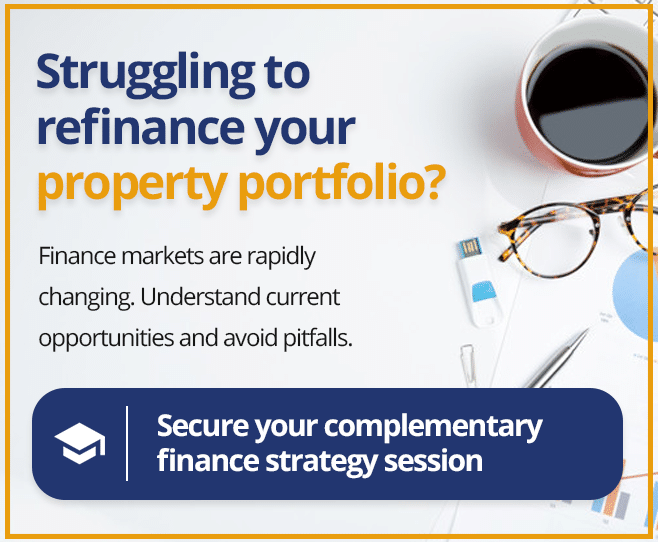The best investment property suburbs in Melbourne
The turbulence delivered by 2020 has been historic.
It’s fair to say, prior to this pandemic, many Melbourne property stakeholders were quietly confident about the coming year. It was expected to be a period where good assets would see reasonable capital gains and sustained rental demand.
Instead, they were given a tough lesson in expecting the unexpected. The national shutdown in March 2020 – the first of many shutdowns to follow – delivered an economic challenge along with the looming health crisis.
But our country has done an enviable job dealing with the pandemic. While we are still battling the so-called waves of infection that emerge, we are getting better and more efficient at isolating, wearing masks and taking precautions.
We now know that suppression isn’t a permanent solution. If we have learned anything, it’s that we must be ever vigilant, ever watchful, ever mindful, about the omnipresent threat of COVID infection. And we must continue to get vaccinated as the pathway back to normal.
We saw the curve flatten and a slow reopening of activity that had many Australians hoping for a quicker-than-expected return to normal.
But we also need to learn to live with Covid, just as we live with the flu each year, along with many other viruses and diseases as constantly grinding our economy to a halt with these lockdowns can never work.
In the topsy-turvy environment we’ve been living in since this pandemic arrived on our shores, it’s nearly impossible to predict anything with certainty, let alone property market performance.
We went through some lean times but, for now, the property market has roared back, stimulated by measures designed to help more buyers than ever before get into the market.
How Melbourne’s market tracked in 2020
Last year was a tough one. Data reveals that Melbourne’s home values retracted 2.1 per cent over the 12 months to September 2020. Auction clearance rates were at incredible lows of 32.1 per cent – which shouldn’t be surprising given the lockdowns were forcing everyone to stay at home.
On top of that, listing numbers plummeted. Not only were buyers forced to stay home, but sellers weren’t bringing stock to the market for agents to sell. CoreLogic analysis showed new listings fell 76.2 per cent in this period.
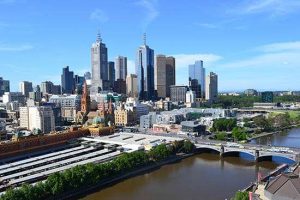
Since that bleak period in 2020, the market has rebounded. In June 2021, Melbourne’s home values tracked a record 16 per cent over 12 months to June and the market is about to go past pre-pandemic levels. According to CoreLogic data, Melbourne has 119 suburbs with a median house price of $1 million or more, up from 98 suburbs a year ago.
This growth is not limited to houses. Melbourne’s unit market has also rebounded, adding 8 per cent over 12 months to March 21.
Taking stock of the Melbourne property market
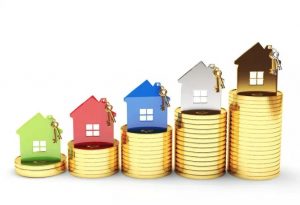
So, long-term investors seem fine and, if history is any indicator, those who buy now and hold for multiple property cycles will probably come out ahead when they do eventually sell.
Given how low interest rates have been tracking, there are many who expect to see property values rebound convincingly once we get to the other side of this COVID event.
Here’s a key lesson for those property investors in Melbourne wanting to buy during the crisis – now, more than ever, seeking property with good fundamentals makes sense.
Which Melbourne suburbs deliver the best investment growth?
The best investment suburbs in Melbourne are, generally, the ones with a strong history of capital growth which is likely to continue into the future.
Combine this with great amenities, such as access to excellent schools and public transport, and you’re well and truly onto something – particularly if you’re within close proximity of the CBD.
Another excellent fundamental is lifestyle. Access to water, plenty of parks and enviable café hubs (that will reopen in the near future) are all highly desirable for both owners and tenants.
Finding the best suburbs to invest in Melbourne will mean casting a wide net and keeping an open mind. Look at suburbs that may have once been considered unfashionable or a bit daggy. If investors are moving into an area, it will become an up-and-comer very quickly.
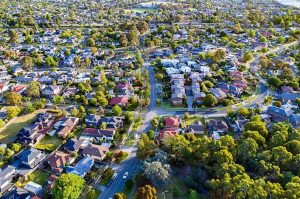
The gentrification of older suburbs like Richmond, Port Melbourne, North Melbourne, Kensington and Fitzroy shows exactly why these areas remain stalwarts of smart investing.
Café and coffee cultures have sprung up all around these suburbs, as are trendy little wine bars and micro-breweries that make these locations both cool to visit and even better to live in. While many of these businesses are currently in hibernation, they will be foundational in value growth post-pandemic.
Other locations worth checking out include the inner- and middle-ring suburbs, such as St Kilda East, Box Hill and Mount Waverley, which have all posted strong growth in the past.
Pay particular attention to any suburbs within close proximity of major infrastructure upgrades – new roads, new highways or new train stations. These will be the first to feel the buyer demand because they will enjoy the benefits of shorter commute times along with improved commute experience, such as newer trains or buses, new roads, etc. And perennial favourites such as Bayside Melbourne (Brighton, Elwood, Hampton, Sandringham) and the inner east such as Malvern, Balwyn, Hawthorn and Camberwell also remain popular with buyers. It’s no surprise given these are highly desirable suburbs to live in, with access to some of Melbourne’s best private schools a major drawcard.
Bridesmaid suburbs
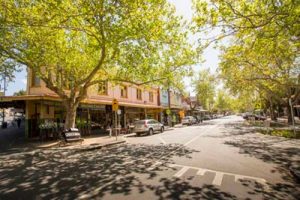
What is interesting is Melbourne’s “bridesmaid” suburbs are actually holding up their values in many cases, better than their more popular neighbours.
What are bridesmaid suburbs though?
Traditionally these suburbs are the cheaper neighbouring suburbs to the traditional popular suburbs as mentioned above.
They can present a better “entry level” to buying into an area that people may want to target, at often a lower price, but still with most of the benefits that their pricier neighbouring suburbs present.
In trendy Northcote, for example, the median house price for the 12 months to June 2021, according to REA, is $1.5 million. Further out on the same train line, prices in more affordable Reservoir hover around $850,000.
These more affordable suburbs often don’t feel the impact of market ups and downs as much as their inner-city rivals do.
During the pandemic, the ever-popular inner-city suburb of Brunswick dropped about 11.6 per cent, to deliver a median house price of $972,500. In comparison, neighbouring Coburg, with a median price in the low $800,000s, fell only 6.6 per cent in the pandemic.
This trend could be seen all over Melbourne. The pandemic did worse damage to the higher-priced inner-city suburbs, while the outer suburbs experienced a softer impact. It’s something to consider when you’re thinking about re-sale value. We won’t know what conditions will be like when it comes time to re-sell. Will the market be facing a new strain that once again has us scrambling for vaccines and lockdowns as a solution to stop the spread? In stressed conditions, suburbs that are a little more affordable – the bridesmaid suburbs – tend to whether the storm better. They have a bigger potential buying audience.
Best suburbs to invest in Melbourne
If you’re compiling a list of the best Melbourne suburbs to buy investment property, median house price growth (or fall) is a great place to start. However, don’t just focus on the past 12 months. Look at the past 5 years to get a more rounded picture about the long-term trends.
It’s also tempting, when considering a house investment in Melbourne, to stretch your finances to ensure you can buy the very best you can afford. However, it’s always a good idea to keep in mind the fact that most lenders will carry out their own bank valuation before finalising a loan. And a bank’s valuation is likely to be a more conservative value than the market value for the property.
There’s often a gap when comparing the bank valuation vs market value and this catches many young borrowers out. It’s likely that the bank won’t lend you as much as you had hoped to buy your dream house and this could leave you with a valuation shortfall. Try to keep your aspirations realistic. Get a clear idea from the bank about budget before you start looking at property. Stick to your budget.
Bespoke buying
Of course, not every location and property will suit every investor. When it comes to house investment in Melbourne, the best choice will always be a suburb and property type that suits your specific investment needs and individual strategy.
Perhaps you’re seeking a capital growth property for your portfolio, which would necessitate investing in a suburb where strong demand from owner-occupiers helps drive prices up.
On the other hand, perhaps you need a cash flow property, which is where the outer-ring suburbs, or even regions like Geelong, might work for your portfolio. The main thing to understand when trying to ascertain the best investment suburbs in Melbourne is that the ones with runs on the board are likely to continue to post solid results over the long term.
Over time, these have tended to be the inner to middle-ring suburbs within a two-to-15 kilometres radius of the CBD.
The fact of the matter is that trying to outsmart the market rarely works, which is why hotspots can quickly turn into “not spots”, and in the wake of this pandemic, sticking with the fundamentals will be key to mitigating risk and boosting the potential value upside.
Real estate investing best played as a long game. If you do your homework properly and get the fundamentals right, you’ll enjoy the benefits of a wise investment for years to come.
Where should I turn for property investment advice on the best suburbs Melbourne?
The Melbourne property market is currently full of opportunities for investors – as long as you understand the best ones for your individual circumstances.
The world of banking and finance can be a pretty daunting one for both novice and sophisticated investors and since our establishment in 2002 we’ve focused on providing outstanding service and business standards.
This approach has been vindicated many times by our multi award-winning approach.
So, if you’d like to understand more about the best investment suburbs in Melbourne, why not contact Intuitive Finance today to ensure you have the right information and expert support on your side from the very beginning.
If you’d like an expert to teach you more about the Melbourne market or if you have any other questions, please just contact us directly and we’ll be in touch.
Discuss your specific needs & formulate the right strategy for you. Get in touch with our mortgage brokers located in Melbourne to organise your complementary 60min session today!
The information provided in this article is general in nature and does not constitute personal financial advice. The information has been prepared without taking into account your personal objectives, financial situation or needs. Before acting on any information you should consider the appropriateness of the information with regard to your objectives, financial situation and needs.The turbulence delivered by 2020 has been historic.
It’s fair to say, prior to this pandemic, many Melbourne property stakeholders were quietly confident about the coming year. It was expected to be a period where good assets would see reasonable capital gains and sustained rental demand.
Instead, they were given a tough lesson in expecting the unexpected. The national shutdown in March 2020 – the first of many shutdowns to follow – delivered an economic challenge along with the looming health crisis.
But our country has done an enviable job dealing with the pandemic. While we are still battling the so-called waves of infection that emerge, we are getting better and more efficient at isolating, wearing masks and taking precautions.
We now know that suppression isn’t a permanent solution. If we have learned anything, it’s that we must be ever vigilant, ever watchful, ever mindful, about the omnipresent threat of COVID infection. And we must continue to get vaccinated as the pathway back to normal.
We saw the curve flatten and a slow reopening of activity that had many Australians hoping for a quicker-than-expected return to normal.
But we also need to learn to live with Covid, just as we live with the flu each year, along with many other viruses and diseases as constantly grinding our economy to a halt with these lockdowns can never work.
In the topsy-turvy environment we’ve been living in since this pandemic arrived on our shores, it’s nearly impossible to predict anything with certainty, let alone property market performance.
We went through some lean times but, for now, the property market has roared back, stimulated by measures designed to help more buyers than ever before get into the market.
How Melbourne’s market tracked in 2020
Last year was a tough one. Data reveals that Melbourne’s home values retracted 2.1 per cent over the 12 months to September 2020. Auction clearance rates were at incredible lows of 32.1 per cent – which shouldn’t be surprising given the lockdowns were forcing everyone to stay at home.
On top of that, listing numbers plummeted. Not only were buyers forced to stay home, but sellers weren’t bringing stock to the market for agents to sell. CoreLogic analysis showed new listings fell 76.2 per cent in this period.

Since that bleak period in 2020, the market has rebounded. In June 2021, Melbourne’s home values tracked a record 16 per cent over 12 months to June and the market is about to go past pre-pandemic levels. According to CoreLogic data, Melbourne has 119 suburbs with a median house price of $1 million or more, up from 98 suburbs a year ago.
This growth is not limited to houses. Melbourne’s unit market has also rebounded, adding 8 per cent over 12 months to March 21.
Taking stock of the Melbourne property market

So, long-term investors seem fine and, if history is any indicator, those who buy now and hold for multiple property cycles will probably come out ahead when they do eventually sell.
Given how low interest rates have been tracking, there are many who expect to see property values rebound convincingly once we get to the other side of this COVID event.
Here’s a key lesson for those property investors in Melbourne wanting to buy during the crisis – now, more than ever, seeking property with good fundamentals makes sense.
Which Melbourne suburbs deliver the best investment growth?
The best investment suburbs in Melbourne are, generally, the ones with a strong history of capital growth which is likely to continue into the future.
Combine this with great amenities, such as access to excellent schools and public transport, and you’re well and truly onto something – particularly if you’re within close proximity of the CBD.
Another excellent fundamental is lifestyle. Access to water, plenty of parks and enviable café hubs (that will reopen in the near future) are all highly desirable for both owners and tenants.
Finding the best suburbs to invest in Melbourne will mean casting a wide net and keeping an open mind. Look at suburbs that may have once been considered unfashionable or a bit daggy. If investors are moving into an area, it will become an up-and-comer very quickly.

The gentrification of older suburbs like Richmond, Port Melbourne, North Melbourne, Kensington and Fitzroy shows exactly why these areas remain stalwarts of smart investing.
Café and coffee cultures have sprung up all around these suburbs, as are trendy little wine bars and micro-breweries that make these locations both cool to visit and even better to live in. While many of these businesses are currently in hibernation, they will be foundational in value growth post-pandemic.
Other locations worth checking out include the inner- and middle-ring suburbs, such as St Kilda East, Box Hill and Mount Waverley, which have all posted strong growth in the past.
Pay particular attention to any suburbs within close proximity of major infrastructure upgrades – new roads, new highways or new train stations. These will be the first to feel the buyer demand because they will enjoy the benefits of shorter commute times along with improved commute experience, such as newer trains or buses, new roads, etc. And perennial favourites such as Bayside Melbourne (Brighton, Elwood, Hampton, Sandringham) and the inner east such as Malvern, Balwyn, Hawthorn and Camberwell also remain popular with buyers. It’s no surprise given these are highly desirable suburbs to live in, with access to some of Melbourne’s best private schools a major drawcard.
Bridesmaid suburbs

What is interesting is Melbourne’s “bridesmaid” suburbs are actually holding up their values in many cases, better than their more popular neighbours.
What are bridesmaid suburbs though?
Traditionally these suburbs are the cheaper neighbouring suburbs to the traditional popular suburbs as mentioned above.
They can present a better “entry level” to buying into an area that people may want to target, at often a lower price, but still with most of the benefits that their pricier neighbouring suburbs present.
In trendy Northcote, for example, the median house price for the 12 months to June 2021, according to REA, is $1.5 million. Further out on the same train line, prices in more affordable Reservoir hover around $850,000.
These more affordable suburbs often don’t feel the impact of market ups and downs as much as their inner-city rivals do.
During the pandemic, the ever-popular inner-city suburb of Brunswick dropped about 11.6 per cent, to deliver a median house price of $972,500. In comparison, neighbouring Coburg, with a median price in the low $800,000s, fell only 6.6 per cent in the pandemic.
This trend could be seen all over Melbourne. The pandemic did worse damage to the higher-priced inner-city suburbs, while the outer suburbs experienced a softer impact. It’s something to consider when you’re thinking about re-sale value. We won’t know what conditions will be like when it comes time to re-sell. Will the market be facing a new strain that once again has us scrambling for vaccines and lockdowns as a solution to stop the spread? In stressed conditions, suburbs that are a little more affordable – the bridesmaid suburbs – tend to whether the storm better. They have a bigger potential buying audience.
Best suburbs to invest in Melbourne
If you’re compiling a list of the best Melbourne suburbs to buy investment property, median house price growth (or fall) is a great place to start. However, don’t just focus on the past 12 months. Look at the past 5 years to get a more rounded picture about the long-term trends.
It’s also tempting, when considering a house investment in Melbourne, to stretch your finances to ensure you can buy the very best you can afford. However, it’s always a good idea to keep in mind the fact that most lenders will carry out their own bank valuation before finalising a loan. And a bank’s valuation is likely to be a more conservative value than the market value for the property.
There’s often a gap when comparing the bank valuation vs market value and this catches many young borrowers out. It’s likely that the bank won’t lend you as much as you had hoped to buy your dream house and this could leave you with a valuation shortfall. Try to keep your aspirations realistic. Get a clear idea from the bank about budget before you start looking at property. Stick to your budget.
Bespoke buying
Of course, not every location and property will suit every investor. When it comes to house investment in Melbourne, the best choice will always be a suburb and property type that suits your specific investment needs and individual strategy.
Perhaps you’re seeking a capital growth property for your portfolio, which would necessitate investing in a suburb where strong demand from owner-occupiers helps drive prices up.
On the other hand, perhaps you need a cash flow property, which is where the outer-ring suburbs, or even regions like Geelong, might work for your portfolio. The main thing to understand when trying to ascertain the best investment suburbs in Melbourne is that the ones with runs on the board are likely to continue to post solid results over the long term.
Over time, these have tended to be the inner to middle-ring suburbs within a two-to-15 kilometres radius of the CBD.
The fact of the matter is that trying to outsmart the market rarely works, which is why hotspots can quickly turn into “not spots”, and in the wake of this pandemic, sticking with the fundamentals will be key to mitigating risk and boosting the potential value upside.
Real estate investing best played as a long game. If you do your homework properly and get the fundamentals right, you’ll enjoy the benefits of a wise investment for years to come.
Where should I turn for property investment advice on the best suburbs Melbourne?
The Melbourne property market is currently full of opportunities for investors – as long as you understand the best ones for your individual circumstances.
The world of banking and finance can be a pretty daunting one for both novice and sophisticated investors and since our establishment in 2002 we’ve focused on providing outstanding service and business standards.
This approach has been vindicated many times by our multi award-winning approach.
So, if you’d like to understand more about the best investment suburbs in Melbourne, why not contact Intuitive Finance today to ensure you have the right information and expert support on your side from the very beginning.
If you’d like an expert to teach you more about the Melbourne market or if you have any other questions, please just contact us directly and we’ll be in touch.
Discuss your specific needs & formulate the right strategy for you. Get in touch with our mortgage brokers located in Melbourne to organise your complementary 60min session today!
The information provided in this article is general in nature and does not constitute personal financial advice. The information has been prepared without taking into account your personal objectives, financial situation or needs. Before acting on any information you should consider the appropriateness of the information with regard to your objectives, financial situation and needs.- Serviceability vs. affordability – What’s the difference and how does it affect me? - October 14, 2025
- Why three quality properties beat thirty average ones - September 15, 2025
- Bridging the gap: Buying a new home before you’ve sold the old one - September 4, 2025

